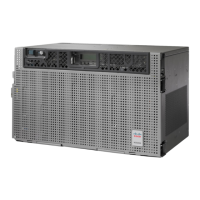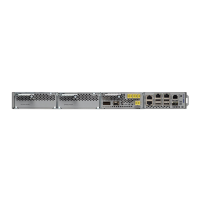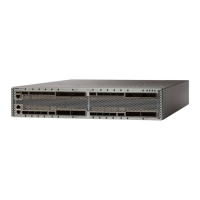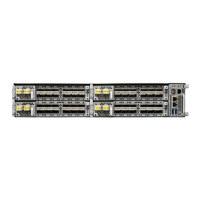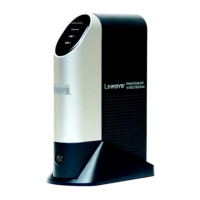The UNIT-HIGH-TEMP alarm applies to the 100G-LC-C, 10x10G-LC, or CFP-LC cards. The alarm occurs
when the temperature of any one of the internal measurement points exceeds its predefined threshold. It
indicates that the card is functioning in abnormal conditions that could jeopardize its reliability in the long
term. The alarm is raised because of one of these reasons:
• An improper rack installation
• Abnormally high environmental temperature
• An unclean air filter
• A hardware failure of the card
Clearing the UNIT-HIGH-TEMP Alarm
SUMMARY STEPS
1. Verify that the rack is installed properly. For proper airflow and cooling of the shelf, the shape of the
vertical posts of the rack should be such that the airflow vents are not covered. For more information
about the installation, refer to the Hardware Installation Guide.
2. If the rack installation is proper, verify that the environmental temperature of the room is not abnormally
high.
3. If the room temperature is not abnormally high, ensure that nothing prevents the fan-tray assembly from
passing air through the system shelf.
4. If the airflow is not blocked, determine whether the air filter needs replacement. Refer to the Inspect,
Clean, and Replace the Reusable Air Filter, on page 457 procedure.
5. If the air filter is clean, ensure all empty slots are installed with filler cards.
6. If all the slots are installed with cards, check the cooling profile settings for the shelf and ensure it is set
to high. See NTP-G354 Enabling Cooling Profile Using CTC.
7. If the cooling profile settings are proper, complete the Physically Replace a Card, on page 453 procedure
for the 100G-LC-C , 10x10G-LC, or CFP-LC card.
DETAILED STEPS
Step 1 Verify that the rack is installed properly. For proper airflow and cooling of the shelf, the shape of the vertical posts of
the rack should be such that the airflow vents are not covered. For more information about the installation, refer to the
Hardware Installation Guide.
Step 2 If the rack installation is proper, verify that the environmental temperature of the room is not abnormally high.
Step 3 If the room temperature is not abnormally high, ensure that nothing prevents the fan-tray assembly from passing air
through the system shelf.
Step 4 If the airflow is not blocked, determine whether the air filter needs replacement. Refer to the Inspect, Clean, and Replace
the Reusable Air Filter, on page 457 procedure.
Step 5 If the air filter is clean, ensure all empty slots are installed with filler cards.
Step 6 If all the slots are installed with cards, check the cooling profile settings for the shelf and ensure it is set to high. See
NTP-G354 Enabling Cooling Profile Using CTC.
Step 7 If the cooling profile settings are proper, complete the Physically Replace a Card, on page 453 procedure for the 100G-LC-C
, 10x10G-LC, or CFP-LC card.
Cisco NCS 2000 series Troubleshooting Guide, Release 11.0
426
Alarm Troubleshooting
Clearing the UNIT-HIGH-TEMP Alarm
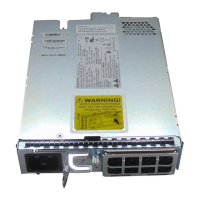
